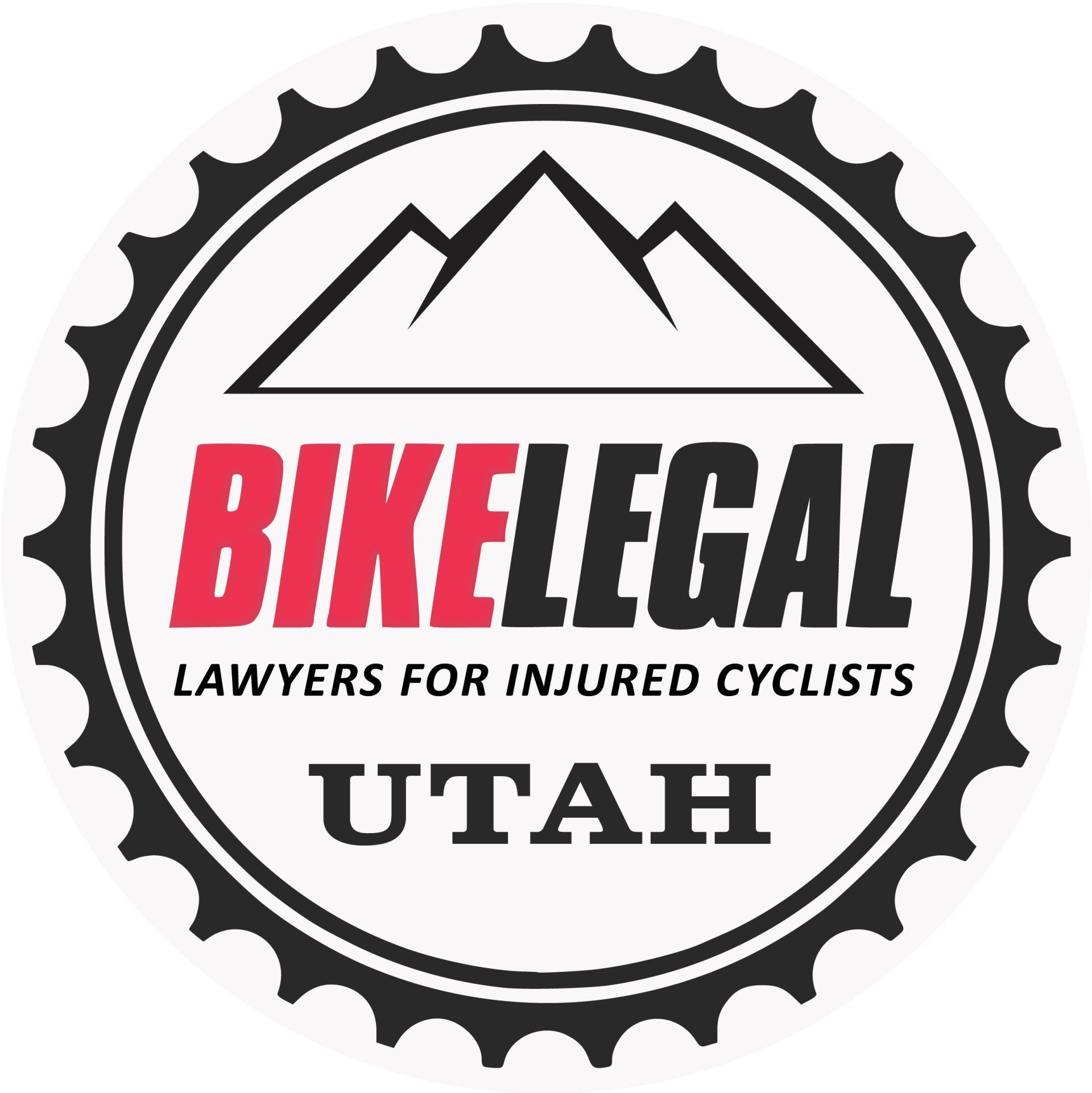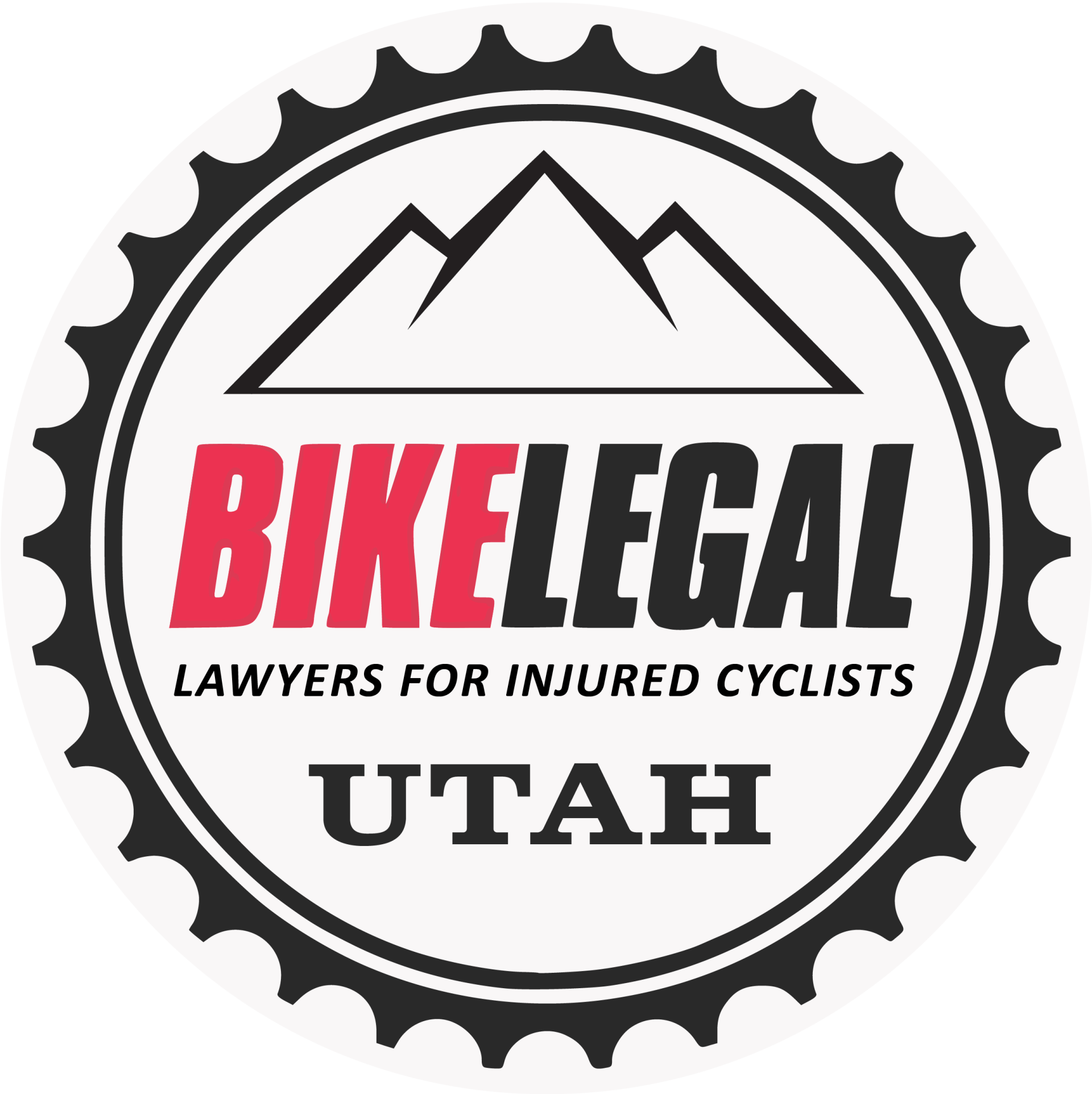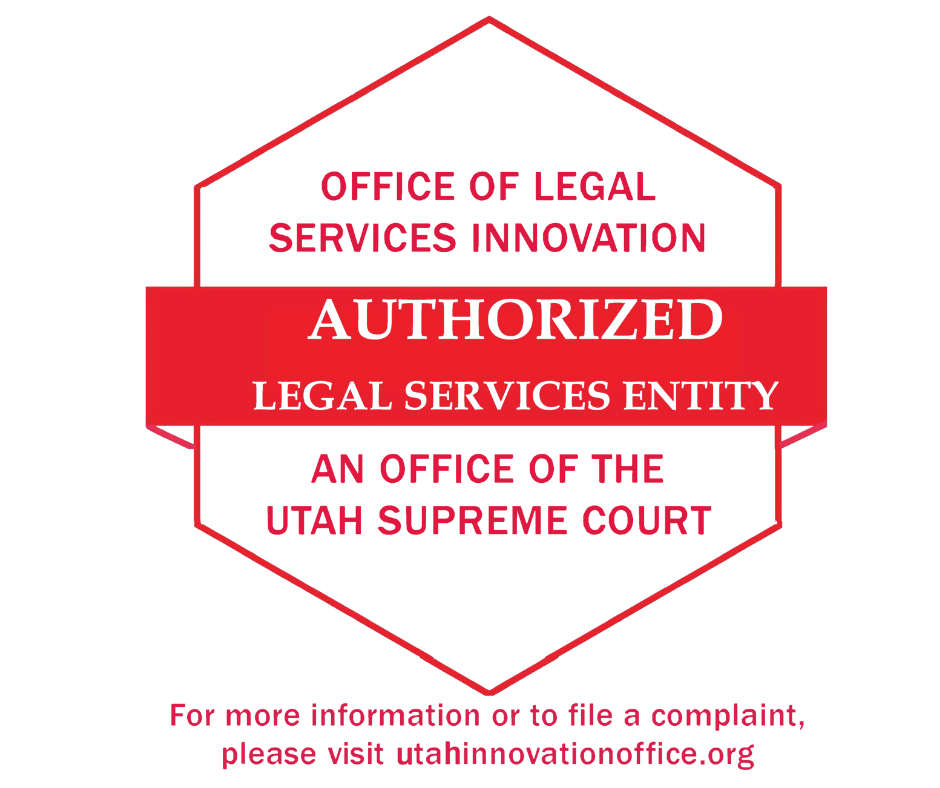Free Case Review 877-BIKE LEGAL
Free Case Review 877-BIKE LEGAL
Utah Passes HB-142 Law Allowing Cyclists to Yield at Stop Signs
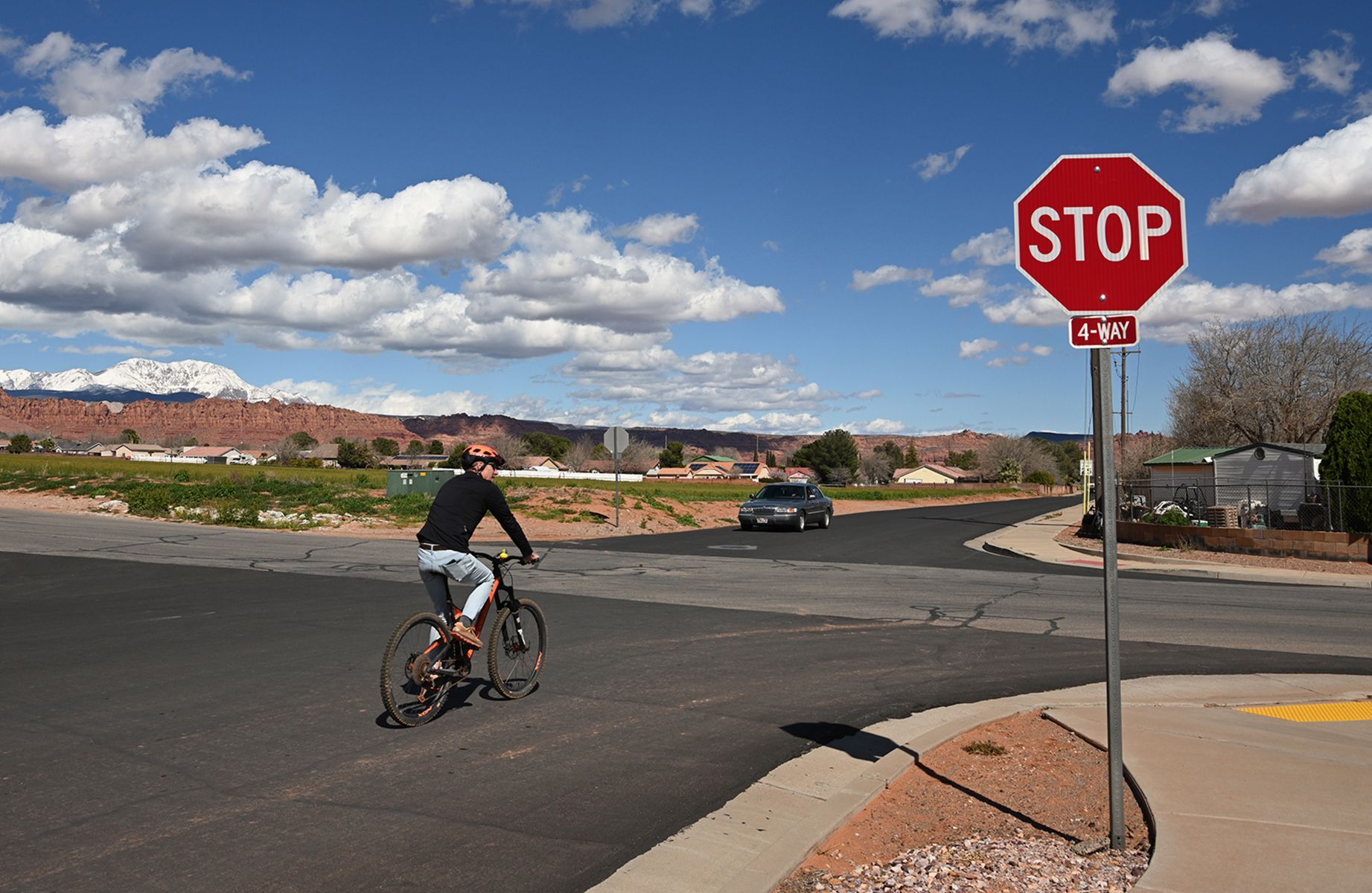
In general, rules and laws serve to establish order and ensure safety. A prime example of this is the stop sign, a law that is widely recognized and respected. According to the law, all vehicles, including bicycles, must come to a complete stop, look both ways and proceed only when it is safe to do so. But what if breaking this rule could actually make the road safer for both cars and cyclists?
At Bike Legal, whenever we publish an article on “sharing the road”, we often receive a barrage of angry comments from drivers directed towards cyclists who don’t adhere to traffic laws. Rolling through stop signs or proceeding through red lights are two common complaints against cyclists. The animosity between drivers and cyclists can often be attributed to a lack of understanding of behaviors.
Frequently, the rules that apply to vehicles on the road aren’t necessarily the best rules when riding a bicycle. This article explains the Utah Yield, its origins from the Idaho Stop, and how breaking traditional rules can increase traffic safety.
What is the Utah Yield for Bicyclists?
This video illustrates the correct way to perform the Utah Yield and what not to do
In the 2021 Utah legislative session, HB-142, also known as the Utah Yield Law, passed with an overwhelming majority of 28-1. This new law allows cyclists to treat stop signs as yield signs. This means that a bicycle rider is no longer required to stop at a stop sign but may proceed through the intersection if it is safe to do so and under these conditions:
The Utah Yield is allowed under these conditions:
- The cyclist needs to slow down to a reasonable speed.
- The cyclist must yield the right-of-way to pedestrians in the intersection.
- The cyclist must yield to other traffic that has the right of way.
- The cyclist must yield to any oncoming traffic that poses an immediate hazard.
These are all common sense bicycle safety practices that experienced cyclists have been doing for years. Now they have the law on their side. But for drivers, this "stop-as-yield", or "rolling stop" may sound counterintuitive, unfair, and much more dangerous.
This change in Utah bicycle laws has been years in the making. Representative Carol Spackman Moss, D-Salt Lake City, sponsored the bill and had been a consistent backer of the string of previously failed attempts to pass similar measures dating back to 2011. However, this time around the bill was
successfully passed. Moss believes that the reason for the success was due to the increasing number of legislators who are cyclists or have gained a better understanding of the unique challenges faced by cyclists when riding on the roads.
The Reason for Bicycle Rolling Stops Lies in Physics
The practice of bicyclists yielding versus stopping at intersections is just a reflection of the basic physics of riding and road safety. Bicycles can stop at shorter distances than automobiles, but they accelerate from a stop much more slowly while requiring much greater effort.
Stop sign intersections are designed to slow traffic. Bicycles already travel much more slowly than cars. The extra effort required to accelerate a motionless bicycle and rider back up to speed to get through an intersection is not only physically taxing, but this delay creates added danger. Additionally, it slows the overall average speed of the ride by up to 39%. A cyclist that is clipped into their pedals must twist their foot, unclip, put their foot down to stop, then carefully re-clip into the pedal, and create a new force to start moving again. Even the most seasoned cyclists encounter mishaps with this process that is required repeatedly.
This video illustrates a common clipless pedal system that many cyclists use
Cyclists intuitively use the law of physics to get from point A to point B most efficiently and as safely as possible. A bicycle ride with an average speed of 14.7mph that allows for safe rolling stops versus a ride averaging 10.9mph with frequent unnecessary stops is a big difference in commute time. This can mean the difference between a happy commuter who continues to ride consistently and a frustrated one who simply gives up and opts for the car instead. Stopping substantially increases time, energy expenditure, discomfort, risk of collision, and risk of strain and injuries. Choosing to ride your bike has significant health benefits as well as reducing the number of cars on the road. Laws that decriminalize common riding behaviors and incentivize more riding are a good thing.
How the Utah Yield law Originated from the Idaho Stop Law
Utah is certainly not the first state to introduce bicycle safety legislation around a stop-as-yield approach to intersections. The pioneer with this type of legislation was Idaho, which introduced its original “Idaho Stop” law in 1982. Idaho’s HB 541 bill was introduced during a comprehensive revision of the Idaho traffic laws. As part of a larger modernization package, the purpose of The Idaho Stop is two-fold:
The purpose of the original Idaho Stop:
- Downgrade thousands of minor traffic offenses so they wouldn’t require court dates thus freeing up court time for actual criminal offenses. Idaho magistrates were increasingly frustrated with the backlog of minor traffic citations issued to bicyclists. Chief among these were tickets issued to cyclists who didn’t come to a complete stop and put their feet down at intersections.
- Modernize the traffic codes including innovative reforms to bicycle laws such as:
- Allowing cyclists to take a lane or merge left when appropriate.
- Treat a stop sign as a yield sign.
- In 2006, it was amended to allow cyclists to treat stop lights as stop signs. Did you know that most traffic sensors do not detect a bicycle? Therefore, a cyclist must remain at the intersection until a car shows up to trip the sensor. This is known as “vehicle detection error”.

The Idaho Stop, or so-called “rolling stop law” was introduced despite some initial objections by cycling advocacy groups and law enforcement. The law operated successfully for many years in obscurity, with few people outside of Idaho aware of its existence. In 2008, when the San Francisco Bay Area Metropolitan Transportation Commission investigated the feasibility of such a law, the concept of the Idaho Stop began to gain recognition. Since then, several states have introduced their own legislation, including Utah with its catchy “Utah Yield” moniker.
Delaware was the first state outside of Idaho to introduce its version of the Idaho Stop law, known as the "Delaware Yield," in 2017. Arkansas followed suit in April 2019 by adopting stop-as-yield and red-light-as-stop laws. Since then, many other states, including Oregon, Washington State, Utah, North Dakota, and Oklahoma, have signed similar bills into law. In Colorado, certain jurisdictions allow the stop-as-yield. Additionally, Idaho Stop-style bills or resolutions have been proposed in San Francisco, Minnesota, Arizona, Montana, and Washington DC.
Stop Sign as Yield vs. Red Light as Stop Sign
It is important to understand that not all states that have adopted the Idaho Stop-as-yield allow the additional modification of treating a red light as a stop sign
Utah's Red Light Law:
A bicyclist 16 years and older facing a red signal or red arrow may cautiously enter an intersection as long as they have come to a complete stop, waited 90 seconds or more, and no other vehicle or pedestrian is entitled to have the right-of-way.
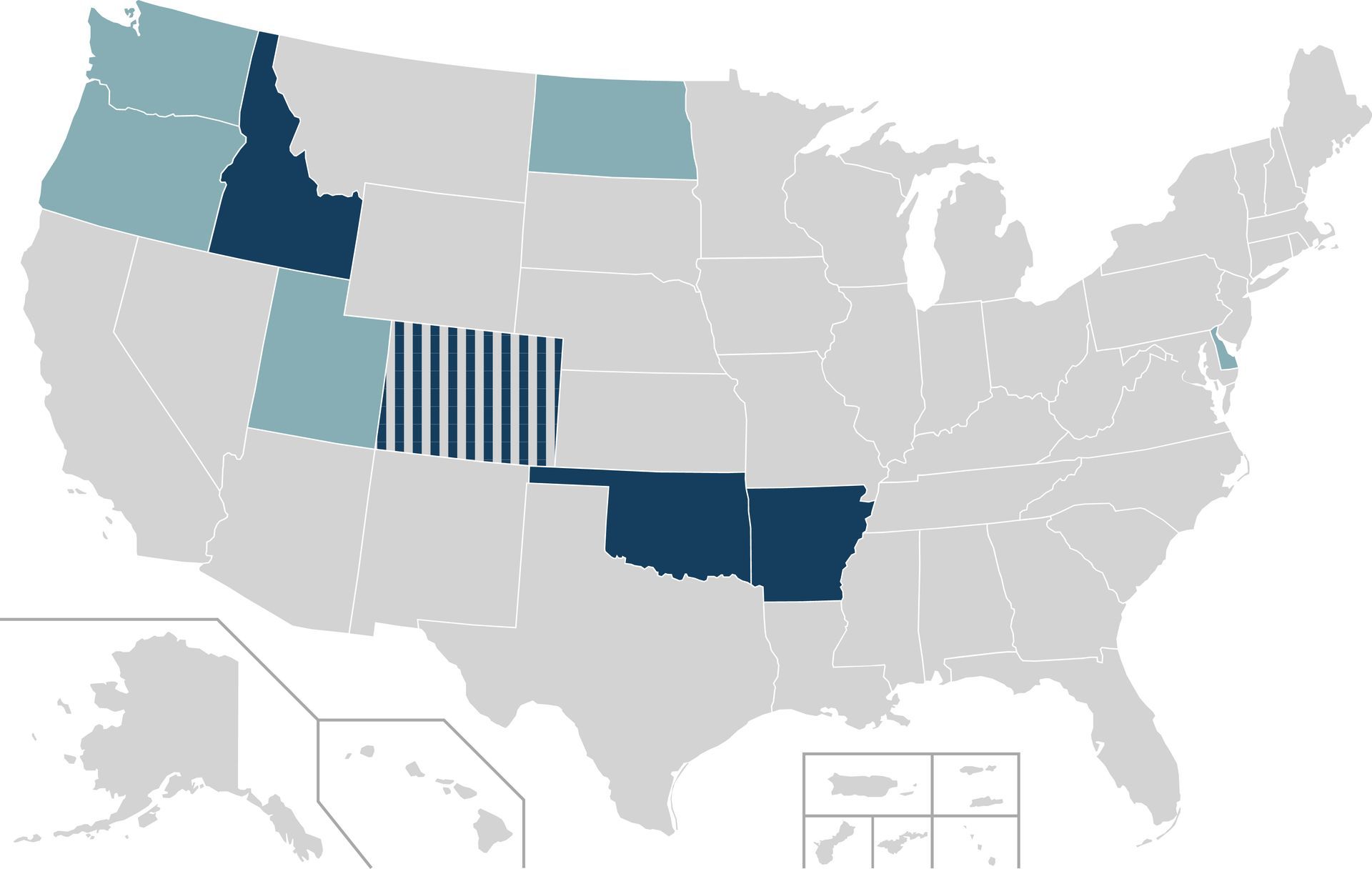
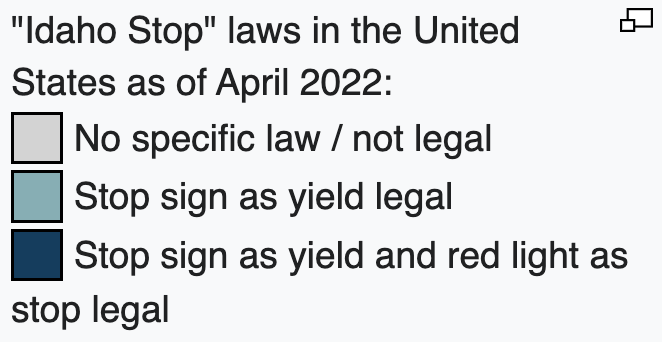
Idaho Stop Law States as of April 2022, according to Wikipedia
The hatched lines on Colorado indicate that only some jurisdictions allow the Idaho Stop Law
Are Rolling Stop Laws Safe?
One thing that we can all agree on is that no one wants to be involved in a traffic collision. We all want to arrive at our destination safely with minimal stops and delays. Intersections are extremely hazardous for all users including motorists, pedestrians, and bicyclists. The Stop-as-yield or rolling stop laws allow cyclists to mitigate risk to their advantage and increase their visibility to drivers while continuing momentum through dangerous intersections.
After Idaho adopted the first stop-as-yield law, bicyclists' injuries from traffic crashes declined by 14.5% the following year according to the 2010 UC Berkeley study. Bike Delaware bicycle advocacy group conducted a similar before-and-after comparison study after they adopted the Delaware Yield in 2017. They found that all bicycle accidents at intersections declined from 82 during 2014-2017, to 63 during 2017-2020, which is a 23% decrease.
Depending on the source of the data and the methods of data collection and analysis, it has either been a net positive, or it has had a negligible effect on overall bicycle safety. The inherent difficulty in measuring its overall impact on bicycle safety is the many variables that affect the overall rate of bicycling accidents. This is particularly true when comparing a location in Idaho to a municipality in another state that doesn’t have stop-as-yield laws.
However, there does appear to be a positive correlation between bicycle accident reduction and the implementation of stop-as-yield laws in different states. Even if the impact of Idaho Stop legislation on overall bicycle safety is negligible, there are still good, common-sense reasons for adopting stop-as-yield laws more broadly.
Reasons for adopting stop-as-yield laws for cyclists:
- Stop-as-yield law decriminalizes a common riding behavior and decreases the drain on court resources.
- Studies indicate improved road safety in states that have adopted stop-as-yield. There is no evidence that these new laws have increased traffic incidents.
- When a bicyclist can maintain a safe but precautionary momentum through an intersection, it allows for continuous traffic flow - for everyone.
- Stop-as-yield encourages more people on bikes which equates to fewer cars on the road and less congestion.
Not Everyone Agrees with Stop-as-Yield Laws
All road users must abide by the same laws
Opponents of the rolling stop make the argument that bicycles are considered vehicles, and therefore should follow the same road laws as motor vehicles, no matter what. However, we know that riding a bicycle requires different behaviors than driving a vehicle. Nevertheless, the notion of a bicyclist not following the same rules as a car still sparks debate.
License to blow
Another concern that opponents have is giving cyclists too much freedom. Rather than prudently slow down and yield, some cyclists may potentially use the law as a license to blow through a stop sign instead, thus increasing unexpected dangers to others using the roadway.
The unlawful, reckless, and self-righteous cyclist
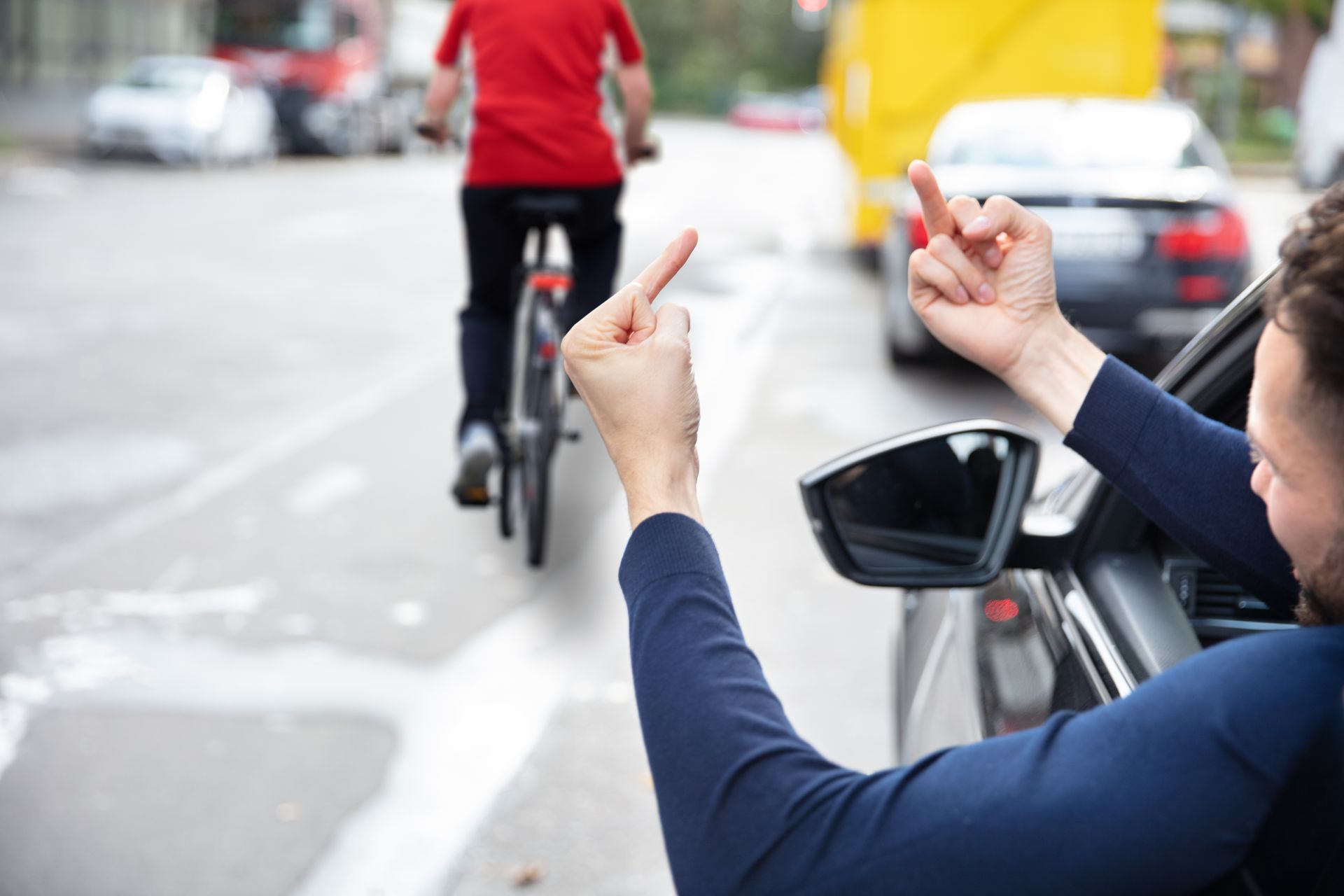
There’s a long-standing debate as to who violates traffic laws more often. The animosity, often hatred between drivers and cyclists seems to be growing every year. Many ill-behaved bicyclists are part of the problem with this lack of respect. We have all seen, countless times when a cyclist or group of cyclists (peloton) seem to have a complete disregard for traffic laws or the presence of anyone else on the road.
Some riders simply use better judgment than others. There is a fundamental difference between a 50-year-old bicycle commuter who has been riding for 20 years and has a healthy sense of self-preservation and a teenage boy on an electric bike. Anyone who has had any experience with teenage boys or remembers being young and reckless understands that they don’t always have a healthy sense of self-preservation.
At the same time, cyclists often feel exposed and disrespected, and there is a sense that the rules aren’t there to protect the most vulnerable road users. Modifying the law to allow cyclists to do what they’ve always done, and educating the public about these legal exceptions, would go a long way to a healthy coexistence between motorists and bicyclists.
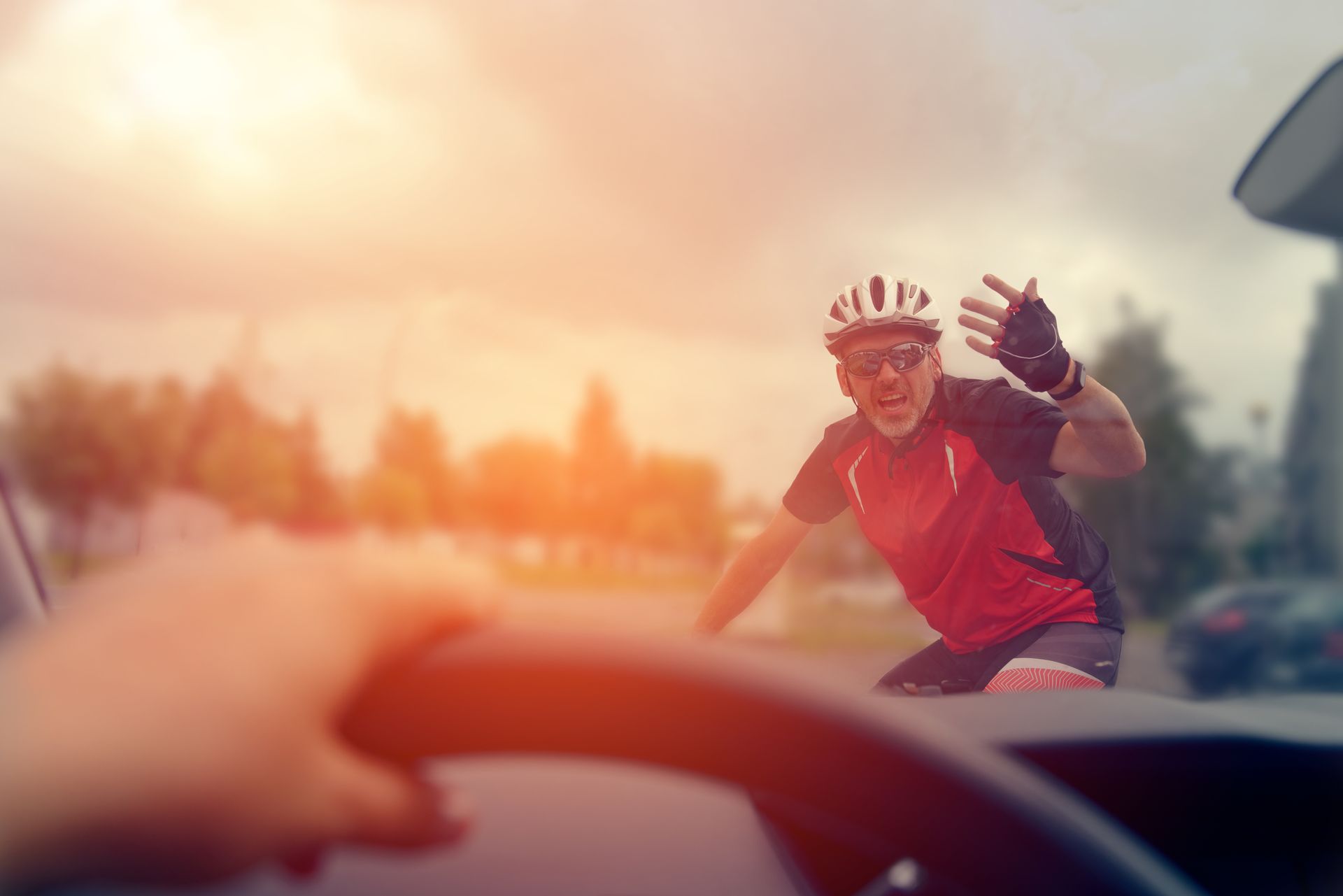
Idaho Stop Laws are Gaining Momentum
The stop-as-yield concept is gaining momentum nationally. The current National Highway Traffic Safety Administration’s acting administrator, Ann Carlson, said at a recent Vision Zero Cities conference that her agency has been reviewing the data on the Idaho stop for several years. She concludes that “it provides additional safety benefits for cyclists.”
“The Idaho Stop allows cyclists to manage risks to their advantage,” Carlson said in her keynote address. “It increases their visibility to drivers and reduces their exposure. It also promotes safety in numbers by encouraging more people to bike, which reduces cyclists’ overall risks.”
Although NHTSA does not dictate traffic policy or legislation for individual states or municipalities, it does signal the general direction policymakers are moving, and her endorsement will likely go a long way to accelerating the push of other state legislatures to adopt their own stop-as-yield laws.
Shared Responsibility for a Common Goal
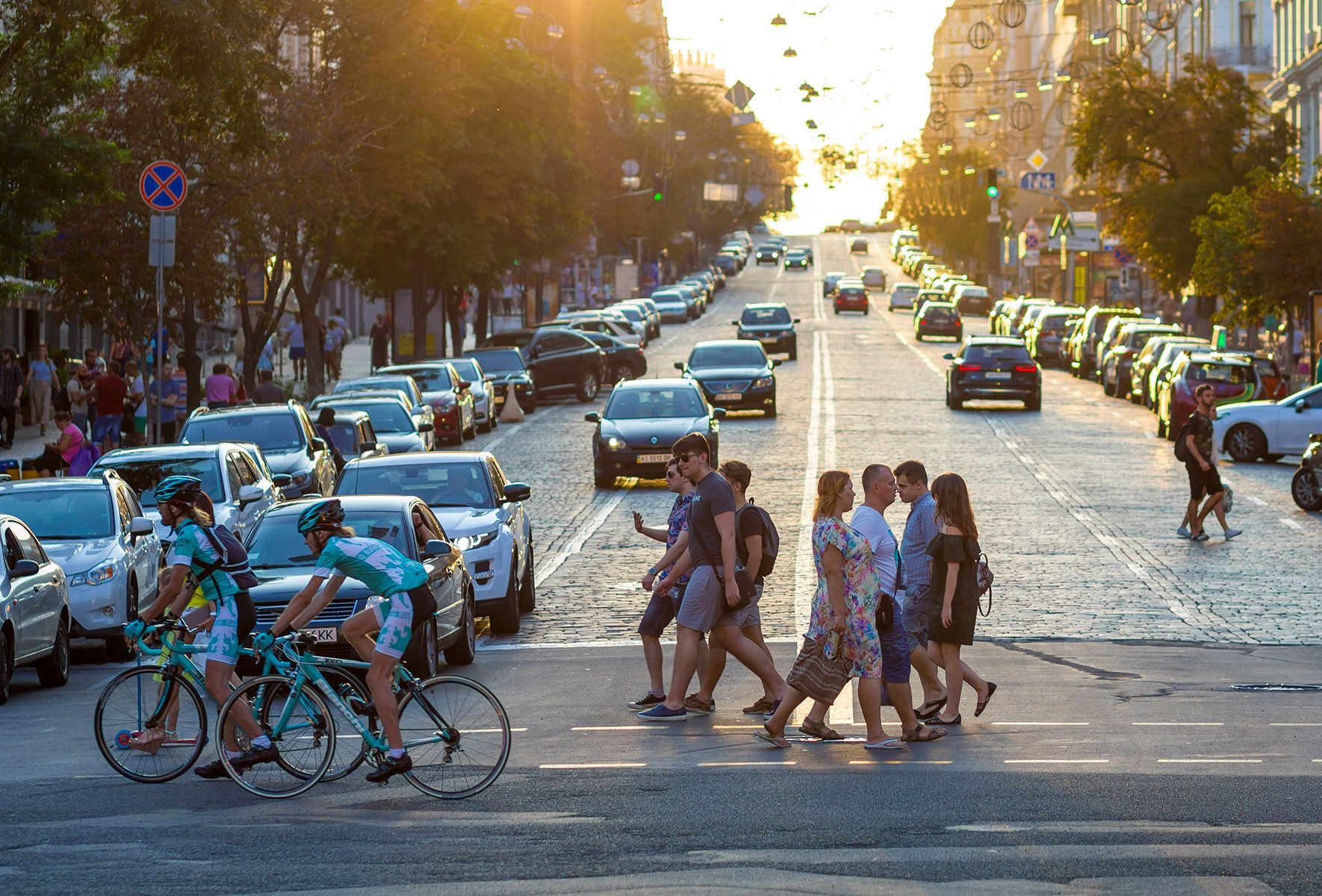
Breaking the rules seems counterintuitive when it comes to safety. Providing one set of rules to one group while another set of rules to another seems unfair. Hopefully, this article has provided a better understanding of why not all road users are the same, and how modifying some rules can be beneficial to everyone.
We all have a common goal, and that is to arrive at our destination safely and with minimal delays.
The only way to achieve zero injuries and fatalities on our roadways is by working together,
practicing patience, and setting a good example for everyone else.
Below is a list of resources related to stop-as-yield and other bicycle laws and safety
- NHTSA Stop-as-yield Safety Fact Sheet
- Utah Motor Vehicle Traffic Code for Bicycles
- Utah HB-142 Traffic Amendment for Cyclists
- League of American Bicyclists State Bike Laws
- Utah Department of Public Safety for Bicycles
- Bike Utah Advocacy
- Salt Lake City Police Department Resources for Drivers and Cyclists
- Southern Utah Bicycle Alliance
At Bike Legal our mission is to advocate for bicycle safety and sharing the road responsibly through education.
Our legal team is committed to supporting and representing cyclists across the United States no matter where you ride or how you ride.
If you or someone you know has been involved in a bicycle accident,
Bike Legal is here to help!
Visit us at www.BikeLegalUtah.com (Utah) or www.BikeLegalFirm.com (other locations)
or call 877-BIKE LEGAL (877-245-3534)

Contact Info
info@bikelegalfirm.com
Southern Utah
Bike Legal Utah
321 N Mall Dr
Bldg R
St. George, Utah 84790
All Rights Reserved | Bike Legal
